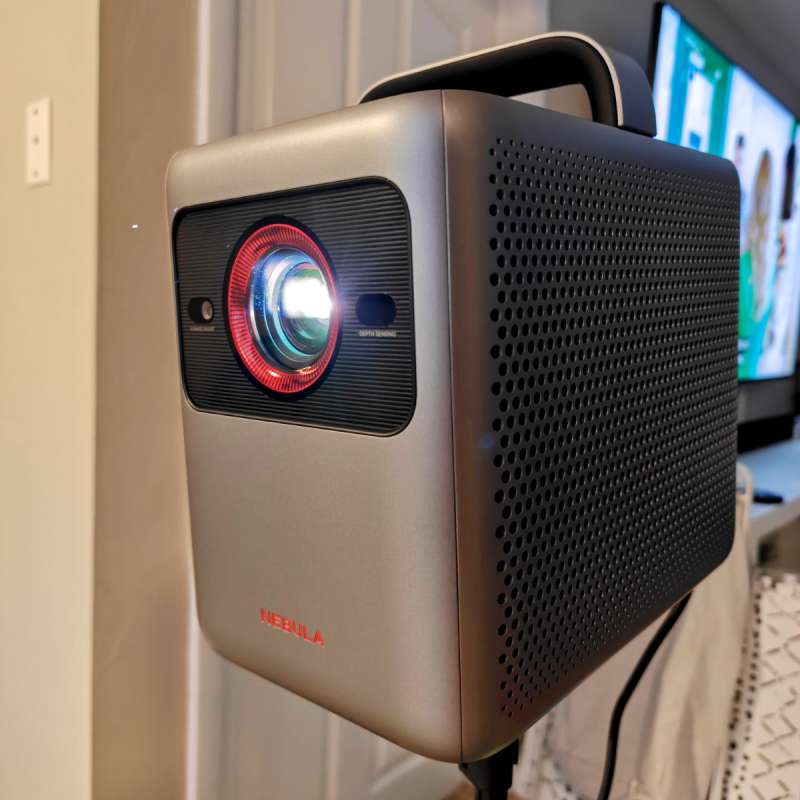
REVIEW – Projectors these days are available in all sorts of shapes, sizes, and price points. These range from sub-$100 compact low resolution models of dubious origin up to multi-thousand dollar home-theater monstrosities. Portable projectors have historically come with compromises like lower brightness, resolution, or features compared to heavier and more expensive home theater models, but that portability is key if you aren’t setting up the projector in a dedicated home theater space. I have loved having access to portable projectors for backyard movie nights (which I think helped us mentally survive the Great Pandemic of 2020), and they’re fun to bring camping or for other adventures as well (we’ve even brought it on random vacations and enjoyed larger-than-life movies on a hotel wall rather than the small in-room TVs on offer). Nebula’s new NEBULA Cosmos 4K SE projector caught my eye immediately when it was offered due to the bright hybrid light system, high resolution, and having Google TV baked right in.
What is it?
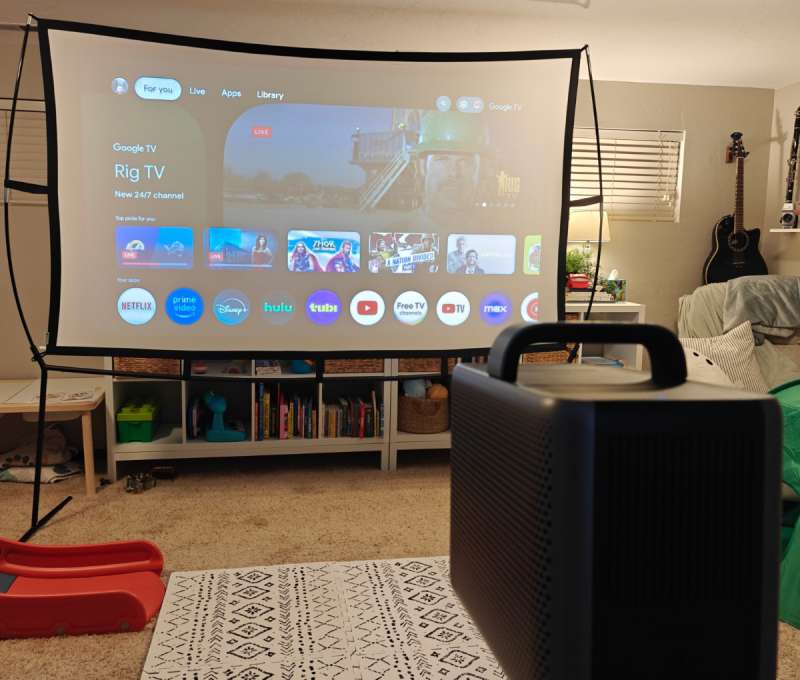
The NEBULA Cosmos 4K SE projector is a projector capable of 4K high resolution display on screens up to 200 inches with a fairly high 1800 ANSI Lumens brightness. It does this while still being semi-portable, though you can still mount this (on a stand or ceiling mount) for a more permanent viewing experience. The SE tag denotes it’s a slightly cheaper version of the previously well-received Cosmos Laser 4K. It loses just a bit of brightness compared to that model, but adds a Google TV interface built right in instead of requiring an external dongle.
What’s included?
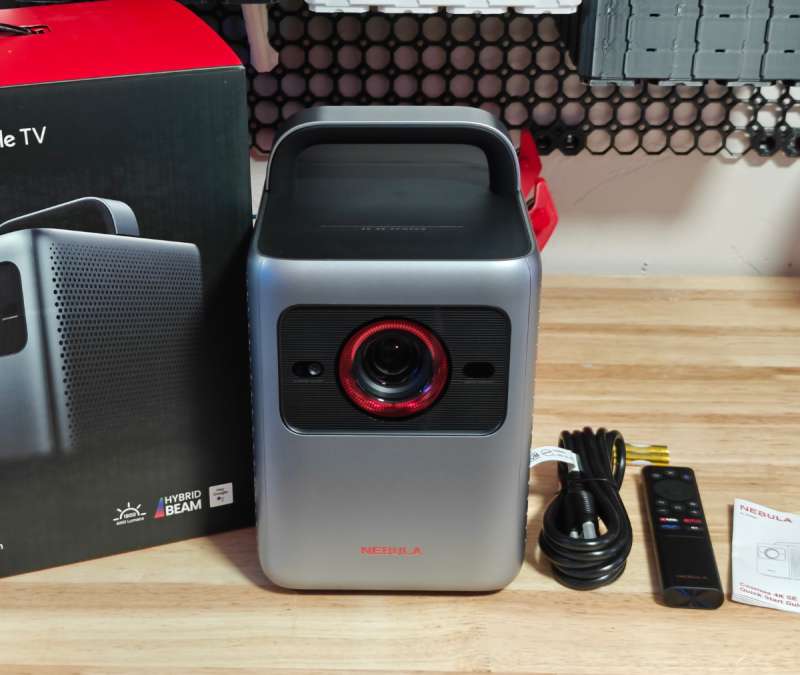
- NEBULA Cosmos 4K SE projector
- AC cable
- Remote
- AAA Battery x2
- Quick Start Guide
Tech specs
Click to expand
- Size: 10.4×8.7×6.5 inches, 263×165×265 mm
- Weight: 9.9 lb, 4.5 kg
- Display Technology: DLP 0.47″ DMD
- Resolution: 3840 × 2160
- Light Source: Laser + LED
- Brightness: 1,800 ANSI Lumens
- Color Gamut: 123.3% Rec. 709
- Color Accuracy: ΔE<1
- Light Source Lifespan: 30,000 Hours
- Aspect Ratio: 16:9
- Throw Ratio: 1.2:1
- Focus Adjustment: Auto / Manual
- Projection Mode: Front / Rear / Front Ceiling / Rear Ceiling
- Keystone Correction: Auto (Vertical +40°), Auto (Horizontal +30°)
- MEMC: Yes
- Inputs: HDMI 2.1, HDMI 2.1 eARC, USB-A, Aux
- CPU: Quad-Core ARM Cortex-A55
- GPU: ARM Mali-G52 MC1
- RAM / ROM: 2 GB / 16 GB
- Speakers: 15W × 2 (Supported by Dolby Audio)
Design and features
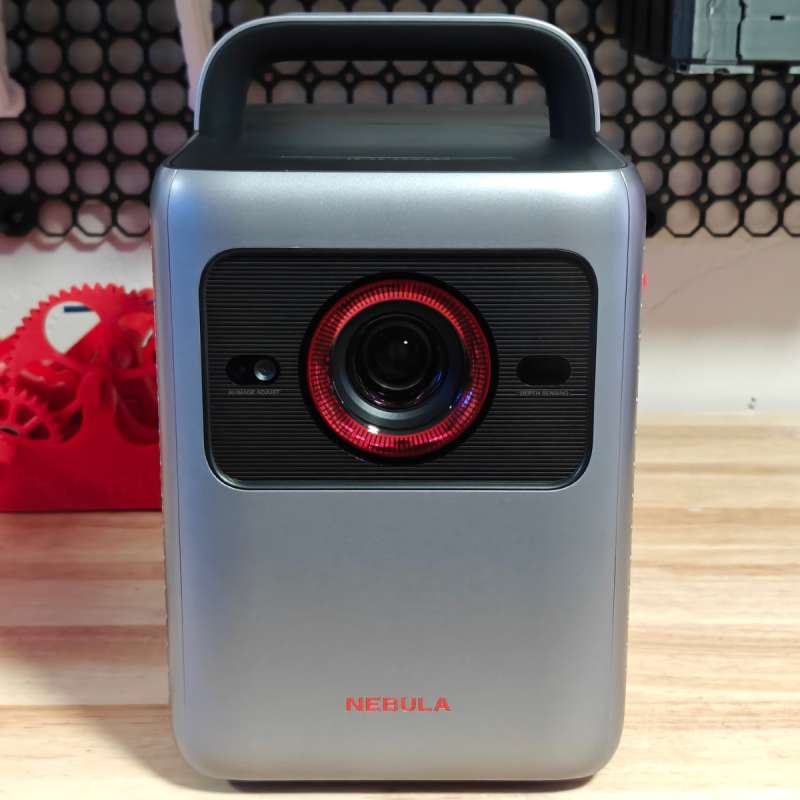
The business end of the NEBULA Cosmos 4K SE projector has the main lens as well as sensors for functions like auto-focus, auto-keystone correction, color correction, ambient light adjustment, and obstacle avoidance. I do wish that there was a lens cap for the cases where you might be storing this in the open for a period of time. You’ll want to store it in the box or you can purchase a $99 travel case from Nebula. If it does gather dust on it, a microfiber cloth will do the trick of cleaning it off quickly.
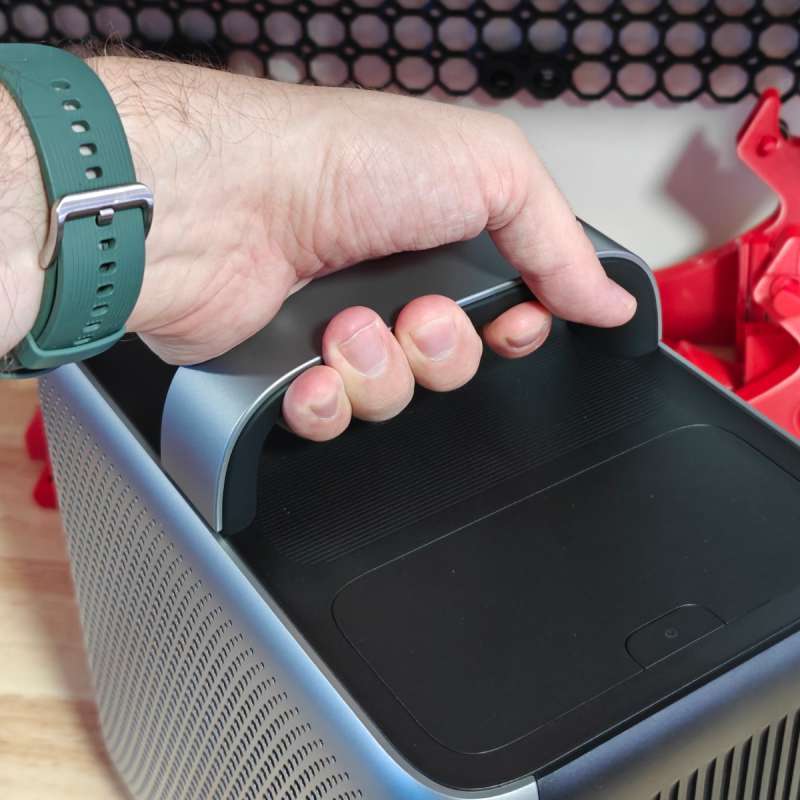
Up top we have the integrated handle that makes the projector portable. It’s pretty easy to carry around, but it is heavier than most of the other portable projectors I’ve tested (except for the ones with built-in batteries). Up top is also the only button (the Power button), so don’t lose that remote!
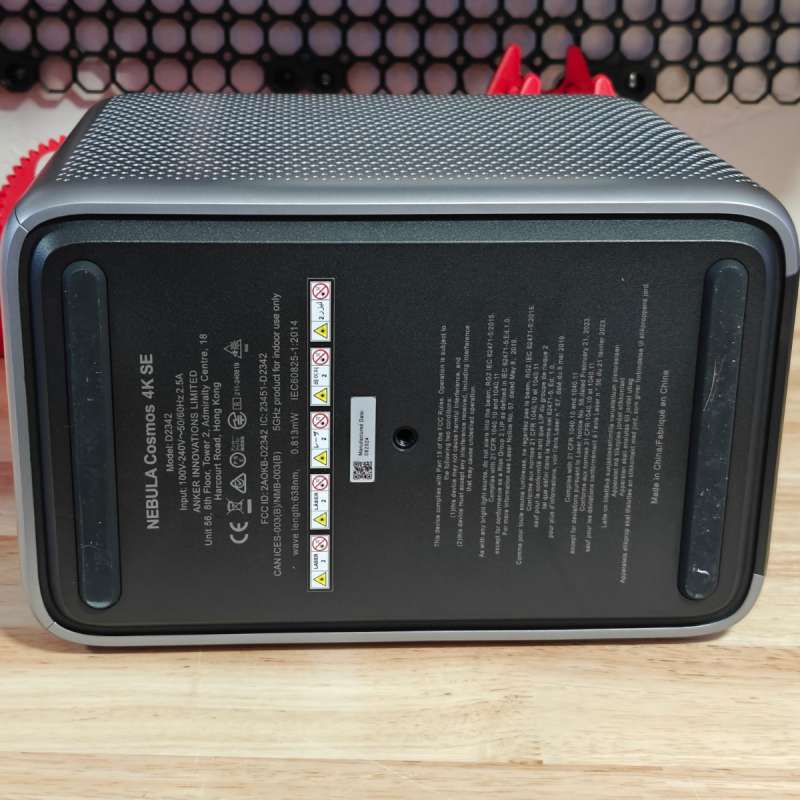
The bottom has a single projector mount hole and two large rubber bars for use on flat surfaces. You can use any standard tripod or you can order floor/desk/wall/ceiling mounts from Nebula as well.
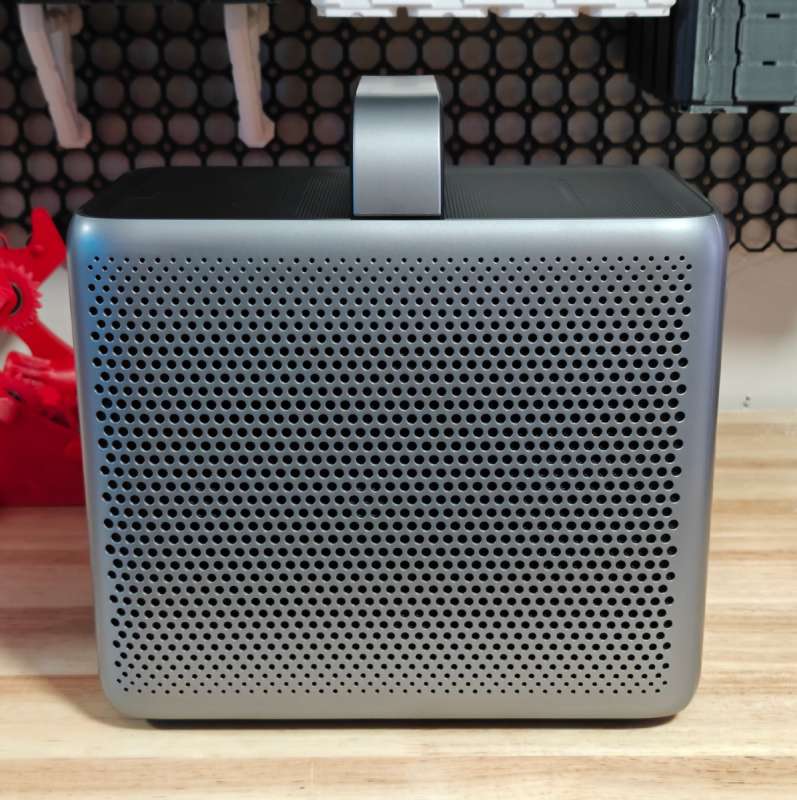
Each side sports machined holes that serve both as fan ventilation as well as for the speakers (dual 15 watt Dolby Audio speakers). These are more than enough for a small room, but you’ll want to add something bigger if you’re playing things in a larger room or outdoors if you’re not sitting near the projector (and if you’re sitting to either side of the projector you lose the stereo sound effect, so I like to put a higher power portable speaker near the screen anyways for best results). The fan noise was audible but not too distracting in all but the quietest scenes.
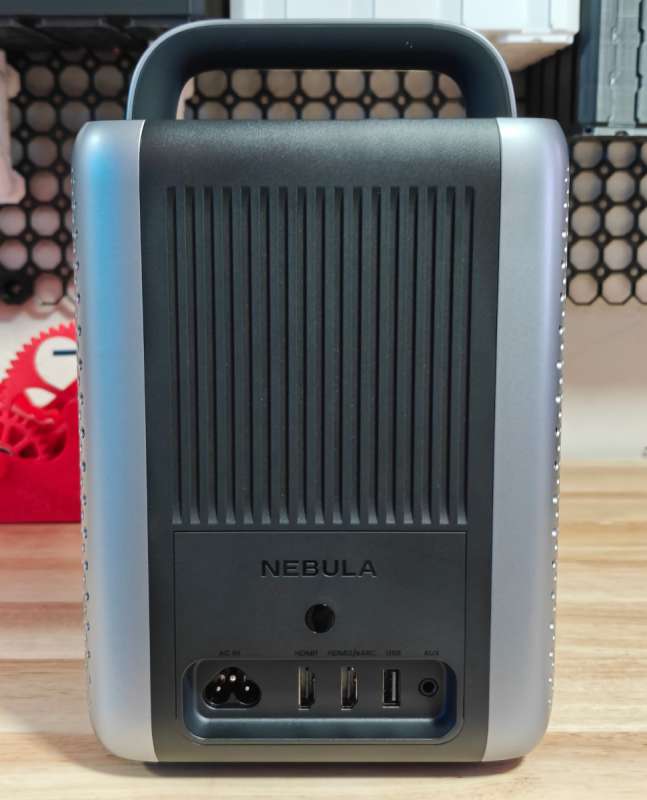
Around back we have the input/output area. From left to right: AC power input, HDMI 2.1, HDMI 2.1 with eARC, USB, and Aux (audio).
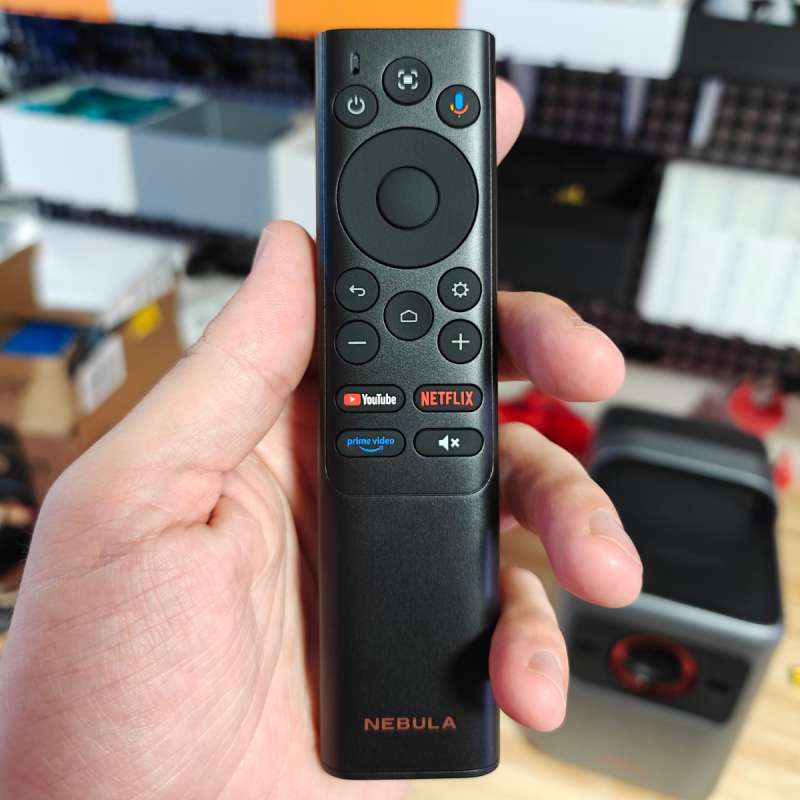
The remote is one of the better ones that I’ve used, with intuitive buttons and backlighting. The voice control button is a great way to search for content instead of having to click on letters one at a time. Shortcut buttons for Youtube, Netflix, and Prime Video are featured as well, which is good if you use those services.
Assembly, Installation, Setup
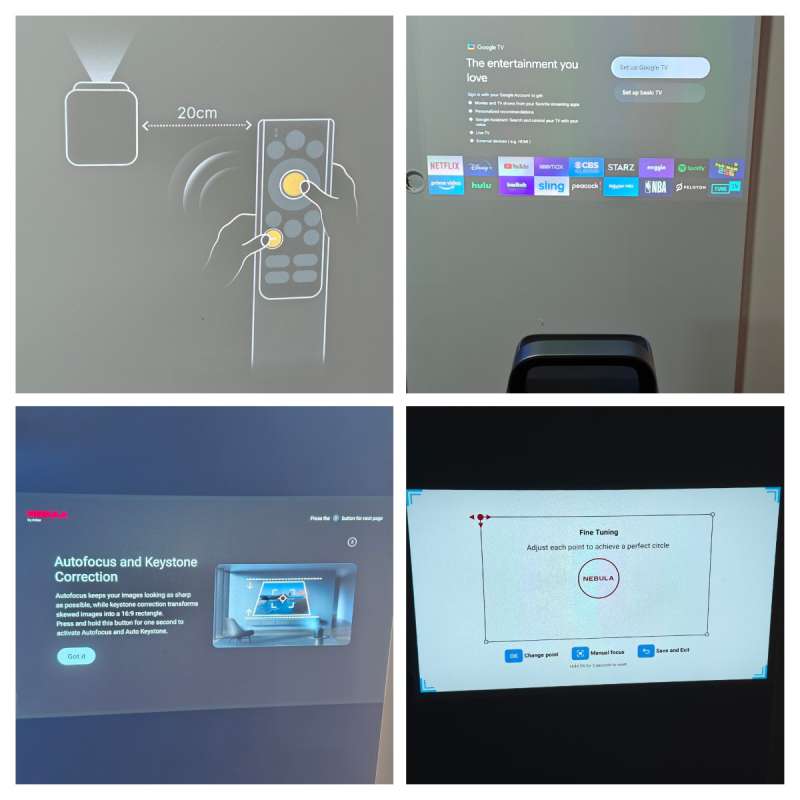
Setup of the NEBULA Cosmos 4K SE projector is pretty straightforward and intuitive. You can set it up with or without the Google TV features (if you’re going to use Apple TV or another external source then you can skip the Google TV part to simplify the interface). You’ll also notice that the projector does some automatic adjustments when turned on or moved (like auto-focus, fit to available space avoiding obstacles, etc.). You can disable or override these settings in the menus, but I found them to be accurate and useful so I kept them on.
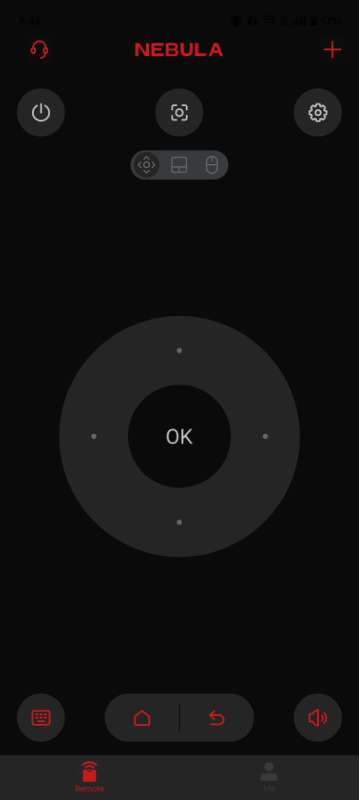
There’s also a Nebula mobile app, but it seemed to just function as a touchscreen remote so I ignored it after setting it up (I much prefer the physical remote).
Performance
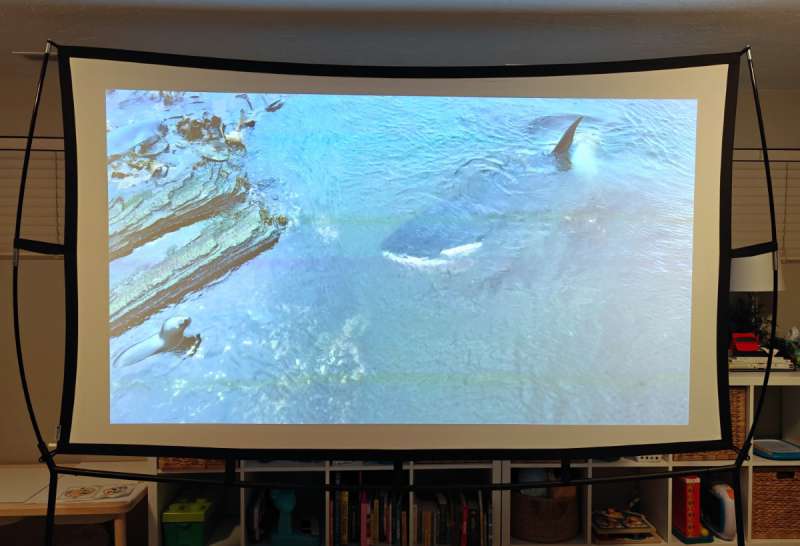
I started my testing of the NEBULA Cosmos 4K SE projector in a room with multiple lights on. I was able to easily watch the test footage, but the dark areas of any scene can only get as dark as the ambient light allows so everything looked washed out. This is true of all projectors though, no knock against the Cosmos 4k SE. Once the lights were out, I was blown away by the picture quality and brightness (I even turned it down a bit in a very dark room). You can also enable ambient brightness and color-correction for projecting on non-white walls, which I found to be a nice enhancement when used).
After checking for any issues with a series of test videos, I then hooked up my Xbox Series X and played various games including Jedi Survivor (footage above – there is some flickering/banding in the video footage that was not visible to the naked eye at all). Once I had the game settings enabled, I didn’t have any input lag at all, and the picture and audio quality were excellent. HDMI 2.1 translated to full 4K at 60 frames per second with Dolby Vision (on supported games). I love that they include an eARC enabled second HDMI 2.1 port for connection to an audio receiver or soundbar.
The hybrid Laser+LED light source is rated for 30,000 hours and results in a nice bright picture, one of the brightest available on a “portable” projector. Home theater projectors will get brighter, but tend to start at almost twice the cost of the Cosmos 4K SE.
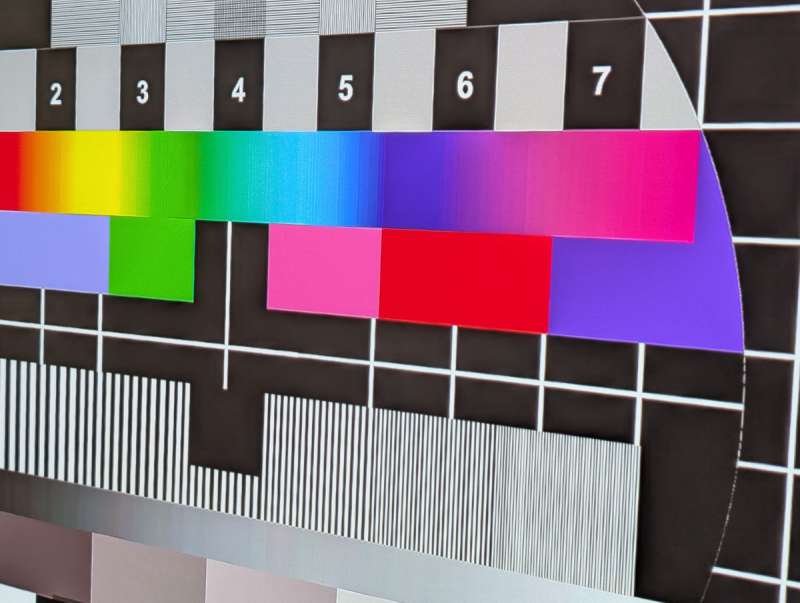
Color accuracy and image clarity were fantastic, I couldn’t find any fault at all. HDR scenes really popped and colorful games and movies looked true-to-life.
The full Google TV Play store is available, and the projector is Google Play Certified including Netflix (many projectors require side-loading Netflix due to lack of certification these days, opening up security risks).
What I like about the NEBULA Cosmos 4K SE projector
- Incredible picture
- Very bright, good for even partial daylight rooms
- Auto-focus and framing features worked well
What needs to be improved?
- It’s big and heavy for a portable projector, but this translates to excellent video and sound
- No lens cover or included carrying/storage case (additional purchase)
Final thoughts
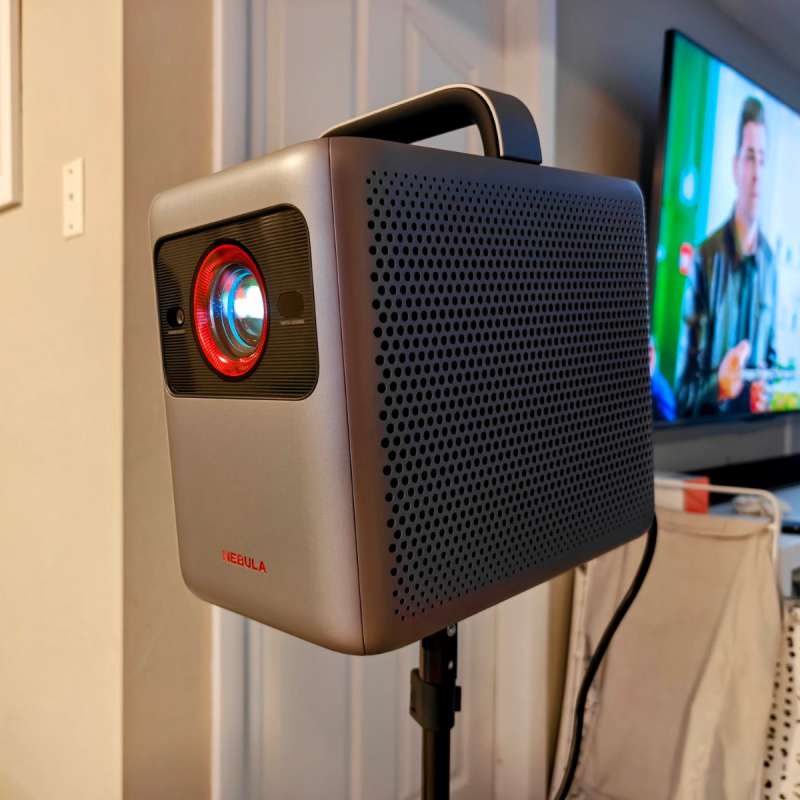
The NEBULA Cosmos 4K SE projector is easily my new go-to for any projector-based media consumption or gaming. If our 75″ QLED tv died tomorrow, I wouldn’t hesitate to paint the wall with a projector-screen-specific paint and get a ceiling mount to replace it with the Cosmos 4K, it would be as good or better than our excellent existing TV (except for when ambient lights are on). In fact, with our toddler quickly developing throwing skills, I may go down this route anyways as a ceiling mounted projector will be much harder for him to destroy than a wall mounted TV.
Price: $1299
Where to buy: Nebula and Amazon
Source: The sample of this product was provided for free by Nebula. Nebula did not have a final say on the review and did not preview the review before it was published.


